Here’s what no one tells you about blog traffic: you’re probably choosing between Google OR Pinterest when you could dominate both.
Most bloggers make one of two mistakes. They either write a good blog post title that optimizes everything for Google and ignore Pinterest completely, or they create “Pinterest-friendly” content that Google absolutely hates.
But what if I told you there’s a way to write one blog post that performs beautifully on both platforms?
Not two separate strategies. Not double the work. One strategic approach that satisfies Google’s algorithms AND Pinterest’s visual search engine.
In this guide, you’ll learn the exact blogging strategy for SEO that works for both platforms. Whether you’re just starting a blog as a blogging beginner or you’ve been at this for years and need to fix your blog SEO mistakes, this system will help you increase blog traffic from multiple sources.
Ready to learn a Pinterest marketing strategy that actually drives results? Let’s break down how to create blog posts that convert on both platforms.
Table of Contents
- Why Most Bloggers Fail at Dual-Platform Optimization
- The Foundation: Understanding Pinterest SEO vs. Traditional SEO
- The Dual-Platform Content Strategy (Step-by-Step)
- Creating Your Pinterest Content Strategy
- Common Blogging Strategy for SEO Mistakes (And How to Fix Them)
- Advanced Blogging 101: Taking Your Strategy to the Next Level
- Frequently Asked Questions About Dual-Platform Optimization
- Your Action Plan: Implementing This Strategy Today
- The Bottom Line on Blog Posts That Convert
Why Most Bloggers Fail at Dual-Platform Optimization
Before we dive into the strategy, let’s talk about why this is so hard.
Google wants in-depth, authoritative content with specific structural elements. Long-form articles with natural language headers, clear semantic chunking, and comprehensive coverage of specific topics.
Pinterest wants visually appealing, actionable content that’s easy to scan and save for later. Vertical images, clear headlines, and benefit-driven descriptions.
These requirements seem contradictory. But they’re not. The secret is understanding what both platforms actually care about at their core: user intent and value delivery.
Common Blog SEO Mistakes That Kill Your Dual-Platform Strategy
- Writing thin content that doesn’t satisfy search intent (Google hates this)
- Creating text-heavy posts without visual breaks (Pinterest users scroll past)
- Using generic titles that don’t include target keywords naturally
- Ignoring structured data and semantic chunking (critical for AI LLMs)
- Not optimizing images with descriptive file names and alt text
- Forgetting to create Pinterest-specific graphics for valuable content
When you understand what each platform needs, you can create content that satisfies both. That’s exactly what we’re going to do.
The Foundation: Understanding Pinterest SEO vs. Traditional SEO
Let’s start with the basics. Pinterest isn’t social media. It’s a visual search engine. That means Pinterest SEO follows many of the same principles as Google SEO, just with a visual twist.
What Google Cares About for Blog Post Titles
Google’s algorithms prioritize content that demonstrates expertise, provides comprehensive answers, and follows clear structural patterns. For blog posts, this means:
- Natural language headers that match how people search (H2’s and H3’s that answer specific questions)
- Semantic chunking, where each section focuses on a single idea
- Clear, quotable statements that LLMs can extract and cite
- Internal linking to related content that builds topical authority
- Author credentials and expertise signals
- Structured data markup (especially for FAQs, How-tos, and Articles)
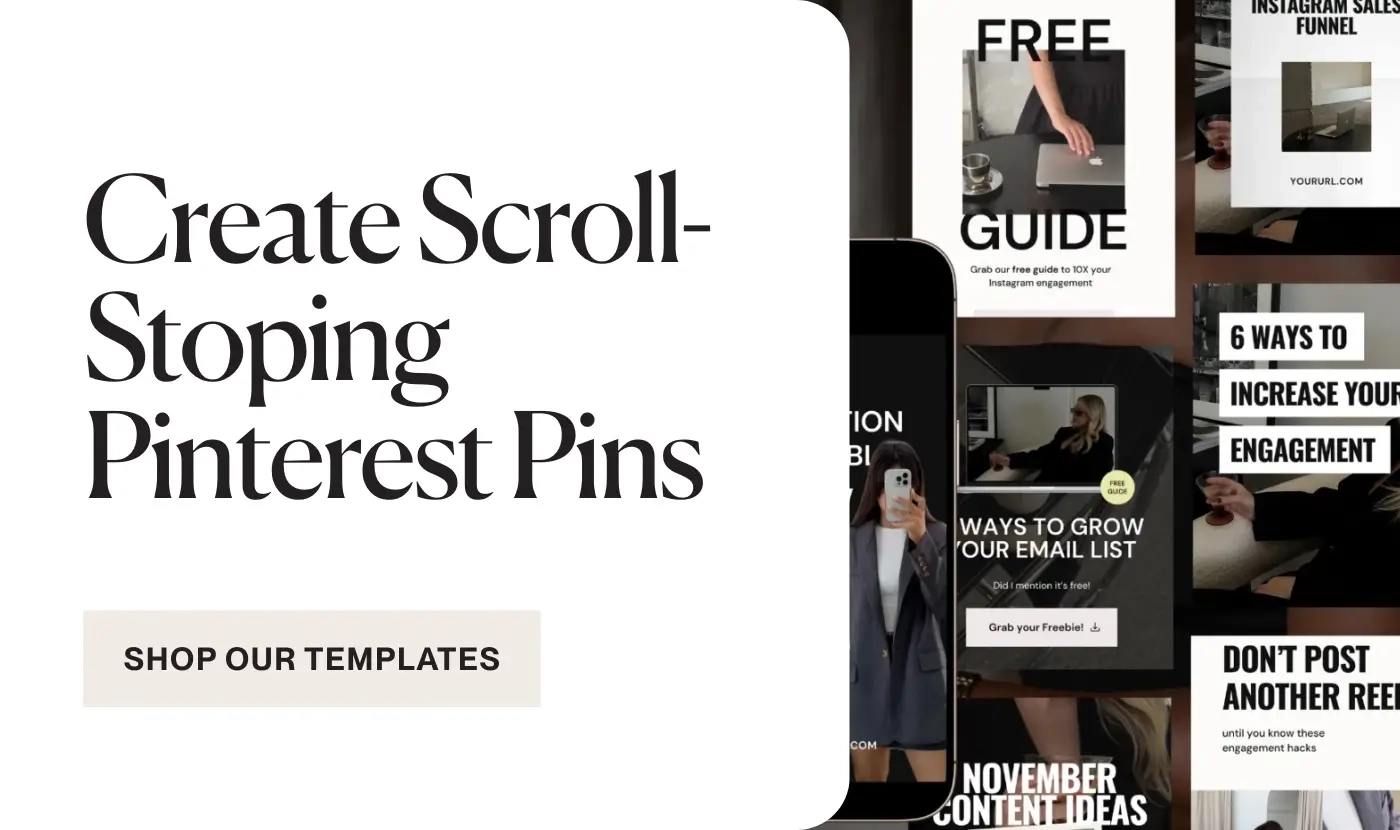
What Pinterest Cares About for Blog Post Content
Pinterest’s algorithm looks for fresh, relevant content that matches user search intent. The platform prioritizes:
- Keyword-rich pin titles that clearly state the benefit
- Detailed pin descriptions (at least 100-150 characters) with natural keyword inclusion
- High-quality vertical images (ideally 1000×1500 or 1080×1920 pixels)
- Consistent pinning behavior from established accounts
- Engagement signals (saves, clicks, and closeup views)
- Fresh content that’s regularly updated and re-pinned
The overlap? Both platforms reward content that genuinely helps users achieve their goals.
The Dual-Platform Content Strategy (Step-by-Step)
Now let’s get tactical. Here’s exactly how to structure your blog posts for maximum visibility on both platforms.
Step 1: Choose Blog Post Topics That Work for Both Platforms
Not every blog post topic is ideal for dual optimization. The sweet spot is content that’s both searchable and visually actionable.
Topics That Work Well:
- How-to guides and templates with clear steps
- List posts with actionable tips (“10 Ways to…”)
- Comparison posts with visual elements
- Resource roundups with examples
- Before-and-after case studies
- Problem-solution content with practical takeaways
The Test: Ask yourself if your topic could be visualized in a compelling Pinterest pin. If the answer is yes, and it’s also something people search for on Google, you’ve found your sweet spot.
Step 2: Structure Your Post for AI and Human Readers
Here’s where most bloggers miss the mark. Your structure needs to satisfy multiple audiences: human readers, Google’s crawlers, AI LLMs, and Pinterest’s algorithm.
Essential Structural Elements:
Clear, Descriptive Headers
Use natural language headers that answer specific questions. Instead of “Introduction,” use “Why Most Bloggers Fail at Pinterest SEO.” This helps both Google understand your content and AI platforms extract relevant sections.
Semantic Chunking
Each section should focus on one idea. Keep paragraphs short (2-4 sentences). Use bullet points for scannable lists. This makes your content easier for AI to parse and cite.
Quotable Statements
Include clear, declarative sentences that summarize key insights. Think: “Pinterest isn’t social media—it’s a visual search engine.” These become citation-worthy for AI platforms.
FAQ Sections
Add frequently asked questions with direct answers. This satisfies both Google’s featured snippets and LLM training data preferences.
Visual Breaks
Include images, screenshots, or graphics every 300-400 words. This keeps human readers engaged and gives you more content to optimize for Pinterest.
Step 3: Master the Art of SEO Writing for Multiple Platforms
Your writing style matters. You need to balance depth (for Google) with scannability (for Pinterest users who land on your blog).
Blogging Tips for Dual Optimization:
Front-Load Your Value
Don’t bury the lead. Your introduction should clearly state what readers will learn and why it matters. Both Google and Pinterest users have short attention spans.
Use Keyword Variations Naturally
Instead of stuffing “Pinterest SEO” everywhere, use variations like “learn Pinterest,” “Pinterest marketing strategy,” and “Pinterest strategist” throughout your content. This captures more search traffic without feeling forced.
Write in Second Person
Address your reader directly using “you.” This creates a connection and makes your content more engaging. Example: “You’re probably wondering how to increase blog traffic without spending hours on multiple platforms.”
Include Specific, Actionable Steps
Vague advice doesn’t perform well anywhere. Give readers exact instructions they can implement today. Number your steps. Use clear action verbs.
Add Evidence and Examples
Support your claims with data, case studies, or specific examples. This builds authority for Google and credibility for readers who arrive via Pinterest.
Step 4: Optimize Your Images for Both Platforms
Images are where most bloggers drop the ball on dual optimization. Here’s how to do it right:
For Google (Technical SEO):
- Use descriptive file names before uploading (Pinterest-SEO-tips-2025.jpg, not IMG_1234.jpg)
- Add comprehensive alt text that describes the image and includes relevant keywords naturally
- Compress images for fast loading (use tools like TinyPNG or ShortPixel)
- Include image captions that provide context and additional keywords
For Pinterest (Visual Optimization):
- Create vertical graphics specifically for Pinterest (1000x1500px minimum)
- Use clear, readable text overlays with benefit-driven headlines
- Include your brand colors and logo for consistency
- Design multiple pin variations for the same blog post
- Save images with “-Pinterest” in the filename to distinguish from blog images
Pro Tip: Create a featured image for your blog post, then create 2-3 Pinterest-specific graphics with different angles on the same content. Upload the Pinterest versions within your blog post so they’re available when readers click “Save.”
Step 5: Structure Your Content for LLM Visibility
This is the game-changer most bloggers don’t know about yet. AI language models like ChatGPT, Claude, and Perplexity are becoming major traffic sources. Optimizing for them requires specific formatting.
LLM-Friendly Content Elements:
Comparison Tables: When discussing options or tools, present information in clean tables. AI models love structured data that they can easily extract and cite.
“Best For” Ratings: Give specific use-case recommendations. Instead of just listing options, say “Best for bloggers on a budget” or “Best for Pinterest growth with limited time.”
FAQ Format with Direct Answers: Structure sections as questions with immediate answers. Example:
What is Pinterest SEO? Pinterest SEO is the practice of optimizing your pins, boards, and profile to rank higher in Pinterest’s search results. Like Google, Pinterest uses algorithms to match user searches with relevant content.
Step-by-Step Frameworks: AI models cite procedural content frequently. Break complex processes into numbered steps with clear subheadings.
Author Credentials: Include a brief author bio that establishes expertise. AI platforms weigh credible sources more heavily when deciding what to cite.
Creating Your Pinterest Content Strategy
Once your blog post is optimized, it’s time to create Pinterest content that drives traffic back to it.
Designing Pins That Drive Blog Traffic
Your pin design determines whether people click through to your blog. Here’s what works:
Visual Hierarchy
Place your most important text at the top third of the pin. Pinterest users scan vertically, and the top section gets the most attention before they scroll.
Benefit-Driven Headlines
Don’t just state the topic. Tell viewers what they’ll gain. “Learn Pinterest SEO” is boring. “How to Get 100K Monthly Views from Pinterest (Even as a Beginner)” is compelling.
Clear Branding
Include your logo or website URL so people remember where they found the content. Consistent branding builds recognition over time.
Readable Fonts
Use simple, sans-serif fonts that are easy to read on mobile devices. Most Pinterest users browse on their phones.
Strategic Color Choices
Certain colors perform better on Pinterest. Reds, oranges, and warm tones typically see higher engagement. Test variations to see what resonates with your audience.
Writing Pin Descriptions That Convert
Your pin description is prime real estate for Pinterest SEO. Here’s how to maximize it:
First 50 Characters Matter Most
Pinterest truncates descriptions, so front-load your most compelling benefit and main keyword.
Include Natural Keywords
Work in your target keywords naturally. For this post, you’d include phrases like “blogging for beginners,” “blog traffic,” and “SEO writing” within the description.
Add a Clear Call-to-Action
Tell people exactly what to do: “Click to read the full guide,” “Save this for later,” or “Discover the complete strategy.”
Use Hashtags Strategically
Add 3-5 relevant hashtags at the end of your description. These help Pinterest categorize your content but don’t overdo it.
The Pinning Strategy That Increases Blog Traffic
Creating great pins isn’t enough. You need a strategic approach to actually getting them seen.
Pin Frequency
Consistency matters more than volume. Aim for 5-10 pins per day, including a mix of your content and others’ content that your audience would find valuable.
Optimal Posting Times
Test different times, but generally, early morning (6-8 AM) and evenings (8-10 PM) see higher engagement when people are planning their days or browsing before bed.
Board Organization
Create specific boards for different content categories. A clear board structure helps Pinterest understand your niche and recommend your content to the right audience.
Fresh Pin Creation
Pinterest prioritizes new content. Create multiple pin designs for the same blog post and release them over time rather than all at once.
Engagement Signals
Comment on other pins, respond to comments on yours, and engage with your audience. Active accounts get better distribution.
Common Blogging Strategy for SEO Mistakes (And How to Fix Them)
Let’s troubleshoot the most common issues that prevent bloggers from succeeding with dual-platform optimization.
Mistake 1: Ignoring Search Intent
The Problem: You’re targeting keywords without understanding what people actually want when they search.
The Fix: Before writing, search your target keyword on both Google and Pinterest. Look at what’s currently ranking. What format is it? What questions does it answer? Match that intent in your content.
Mistake 2: Creating Generic Content
The Problem: Your blog posts don’t stand out from the hundreds of other posts on the same topic.
The Fix: Add your unique perspective, specific examples from your experience, and data or case studies. Generic advice doesn’t get cited by AI platforms or saved by Pinterest users.
Mistake 3: Neglecting Technical SEO
The Problem: Your content is great, but technical issues prevent it from ranking.
The Fix: Use SEO plugins (like RankMath or Yoast) to add structured data, optimize meta descriptions, and ensure proper heading hierarchy. Fix image optimization and site speed issues.
Mistake 4: Inconsistent Publishing Schedule
The Problem: You publish sporadically, which signals to both Google and Pinterest that your site isn’t actively maintained.
The Fix: Create a realistic content calendar and stick to it. Even one quality post per week is better than five posts one month and nothing the next.
Mistake 5: Not Updating Old Content
The Problem: Your old blog posts sit there collecting dust instead of continuing to drive traffic.
The Fix: Regularly update your best-performing posts with new information, fresh examples, and current data. Add new Pinterest graphics and re-pin them. This signals freshness to both platforms.
Advanced Blogging 101: Taking Your Strategy to the Next Level
Ready to go beyond the basics? Here are advanced tactics that separate amateur bloggers from Pinterest strategist professionals.
Create Content Hubs for Topical Authority
Instead of random blog posts, organize your content into clusters around core topics. For example:
Core Topic: Pinterest Marketing
- Pillar Post: Complete Pinterest Marketing Guide
- Supporting Posts: Pinterest SEO, Pinterest Analytics, Pinterest Ads, Pinterest for Different Niches
Link these posts together strategically. This builds topical authority with Google and creates a comprehensive resource for Pinterest users.
Leverage User-Generated Content
Encourage your audience to share their results using your strategies. Feature these in your blog posts. User-generated content signals authenticity to both Google (E-E-A-T) and Pinterest users.

Build an Email List from Both Traffic Sources
Don’t just drive traffic to your blog and hope it converts. Create content upgrades specifically designed for each post. Offer downloadable resources in exchange for email addresses. This turns one-time visitors into long-term audience members.
Test and Iterate Based on Data
Use Google Analytics and Pinterest Analytics to track what’s actually working. Look at:
- Which blog posts get the most Pinterest traffic
- Which pins drive the highest click-through rates
- What content formats perform best on each platform
- Where people drop off or stop engaging
Double down on what works. Cut what doesn’t.
Frequently Asked Questions About Dual-Platform Optimization
How long should my blog posts be for optimal performance on both platforms?
For dual optimization, aim for 1,500-2,500 words. This gives you enough depth to satisfy Google’s algorithms and cover topics comprehensively for AI language models, while also providing enough content sections to create multiple Pinterest graphics from a single post.
Do I need different keywords for Pinterest SEO vs. Google SEO?
Not necessarily. Many keywords perform well on both platforms, especially how-to terms and problem-solution searches. However, Pinterest users tend to search with more aspirational language, while Google searches are often more informational. Include both variations naturally in your content.
How many Pinterest pins should I create for each blog post?
Create at least 2-3 different pin designs for each substantial blog post. This allows you to test different headlines, imagery, and designs to see what resonates best with your audience. Space out publishing these variations over weeks or months to keep the content fresh in Pinterest’s algorithm.
How often should I update old blog posts for SEO?
Plan to review and update your top-performing posts every 6-12 months. Add new information, refresh examples, update statistics, and create new Pinterest graphics. This signals to Google that your content is current and gives you new opportunities to drive Pinterest traffic.
What’s the biggest mistake bloggers make with Pinterest marketing strategy?
The biggest mistake is treating Pinterest like social media instead of a search engine. Bloggers focus too much on follower count and not enough on keyword optimization, consistent pinning, and creating valuable content that answers specific search queries.
Your Action Plan: Implementing This Strategy Today
Feeling overwhelmed? Don’t be. Here’s exactly how to start:
This Week:
- Choose one existing blog post to optimize using this framework
- Update the headers to be more descriptive and keyword-rich
- Add FAQ sections answering common questions
- Create 2-3 Pinterest graphics for the post
- Optimize all images with proper file names and alt text
This Month:
- Write 2-4 new blog posts using the dual-optimization strategy
- Set up a consistent pinning schedule
- Organize your Pinterest boards by topic
- Install structured data markup on your blog
- Start tracking your results in both Google Analytics and Pinterest Analytics
This Quarter:
- Build content hubs around your main topics
- Update your top 10 existing posts with this strategy
- Test different pin designs and track performance
- Engage actively on Pinterest to build community
- Refine your strategy based on data
The Bottom Line on Blog Posts That Convert
When you write blog posts, you don’t need to choose between Google and Pinterest. You don’t need separate content strategies for each platform. You need one smart approach that satisfies both.
The bloggers who win in today’s landscape understand that visibility matters more than ever. It’s not just about ranking on Google or going viral on Pinterest. It’s about showing up wherever your audience is searching—including in AI chatbot responses.
By following this blogging strategy for SEO, you’re not just increasing blog traffic. You’re building sustainable visibility across multiple platforms. You’re creating blog posts that convert because they genuinely help people solve problems.
Whether you’re just learning the basics of blogging 101 or you’re an experienced blogger looking to fix blog SEO mistakes, this framework works. It’s how you create content that performs long-term, drives consistent traffic, and actually moves the needle for your business.
Now stop overthinking it and start implementing. Your future dual-platform dominating self will thank you.
Ready to dive deeper into Pinterest marketing strategy? Save this post and check back regularly—we update it with new tactics and examples as the platforms evolve.
Pin for later
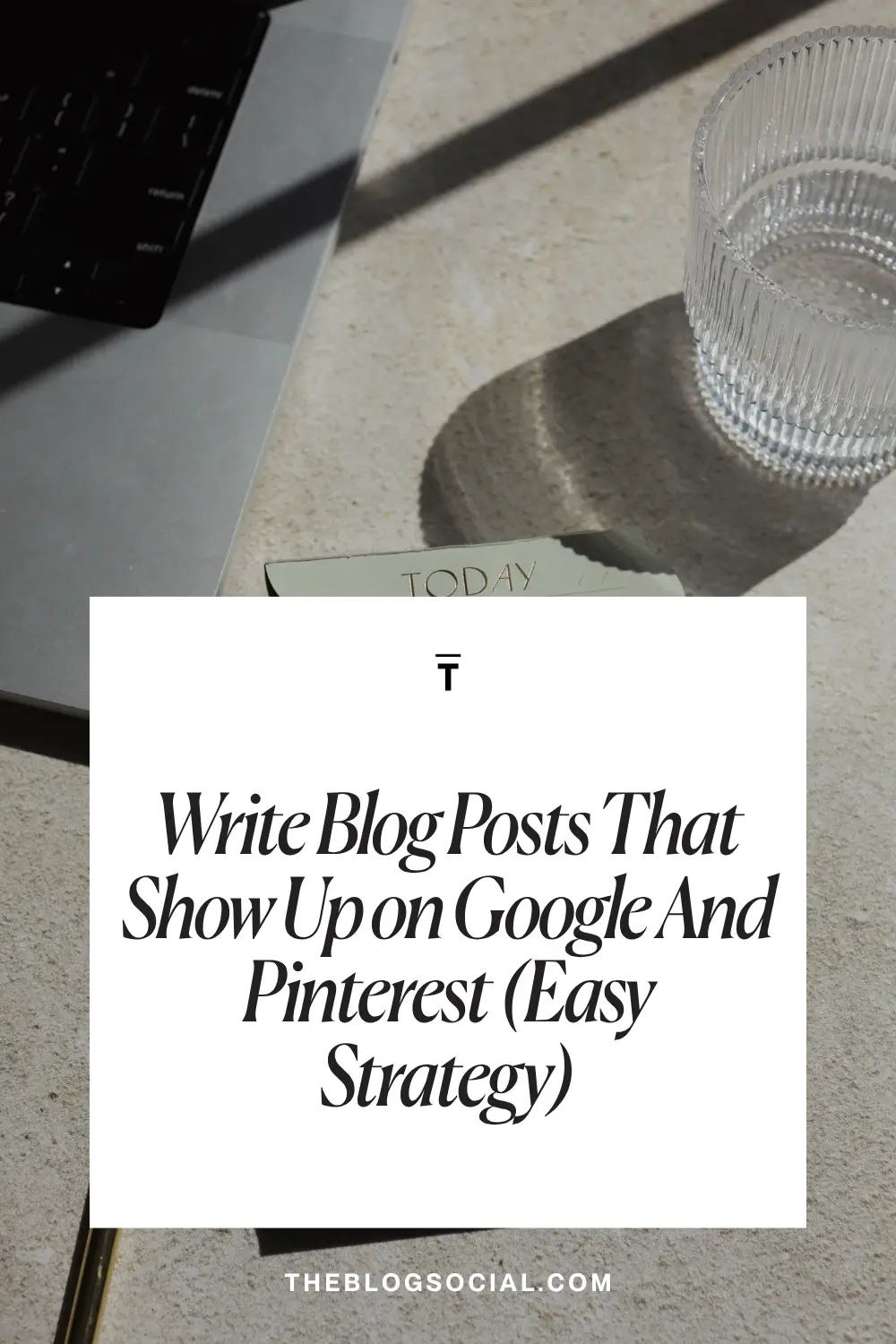
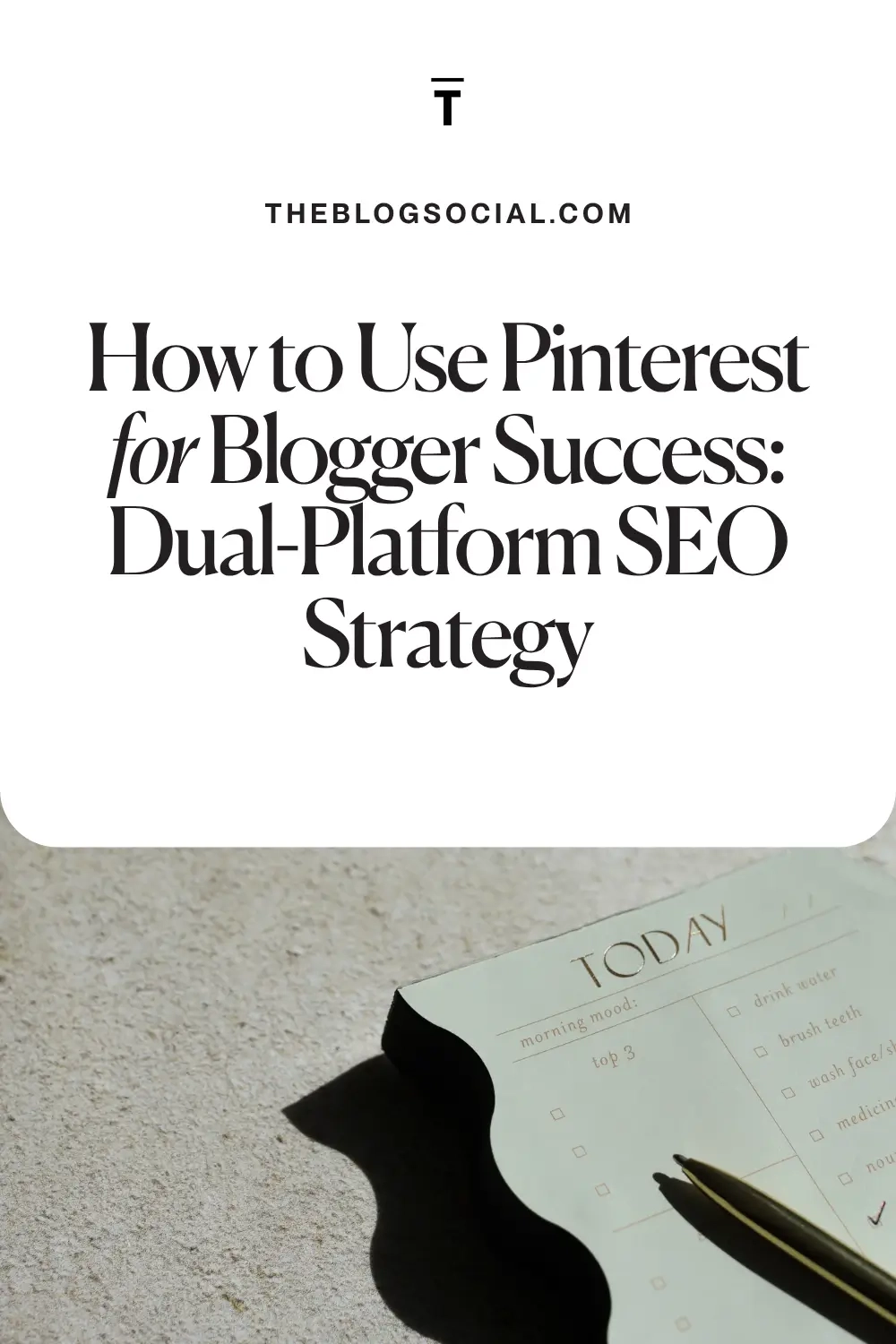




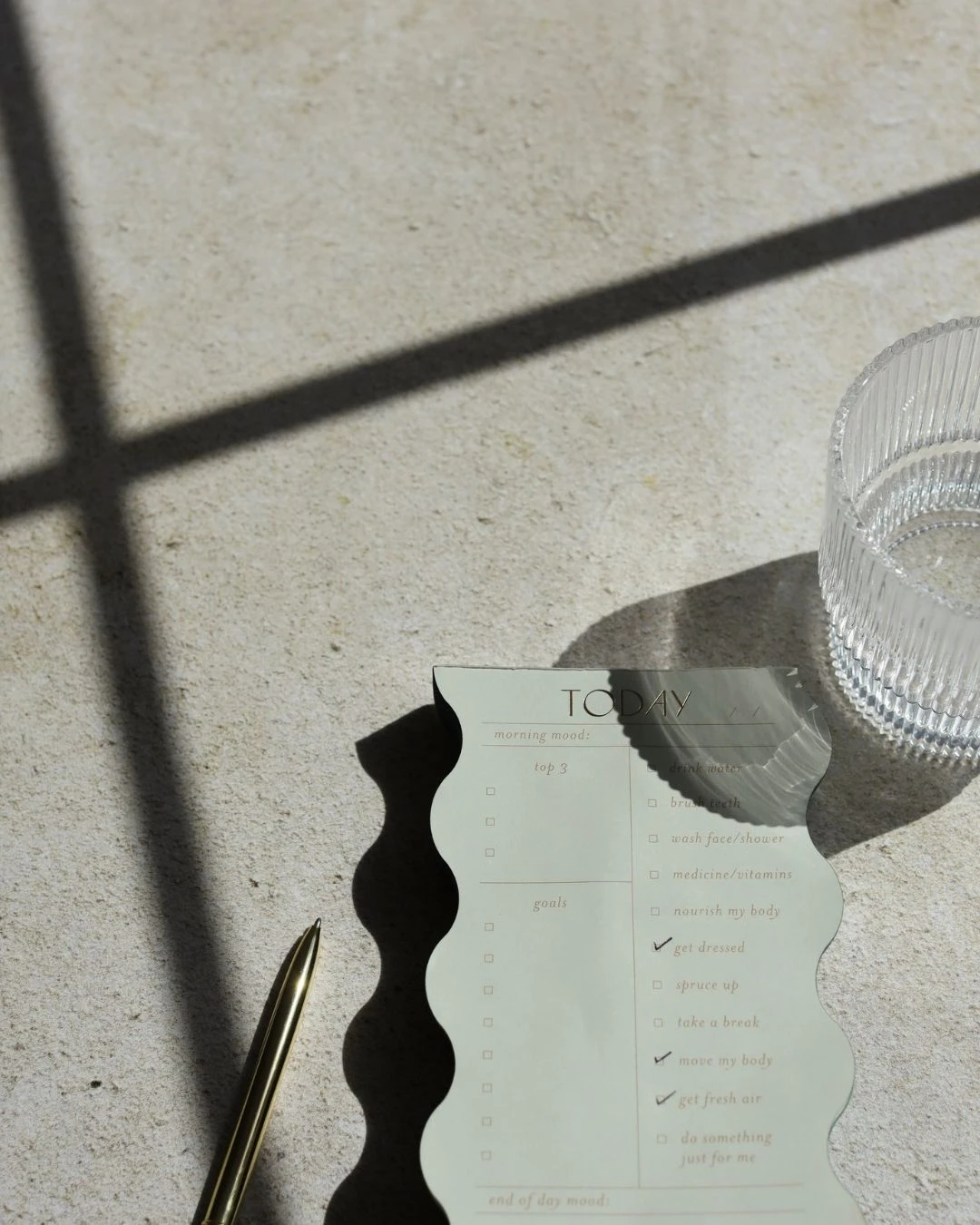

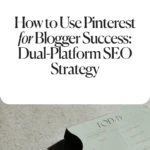

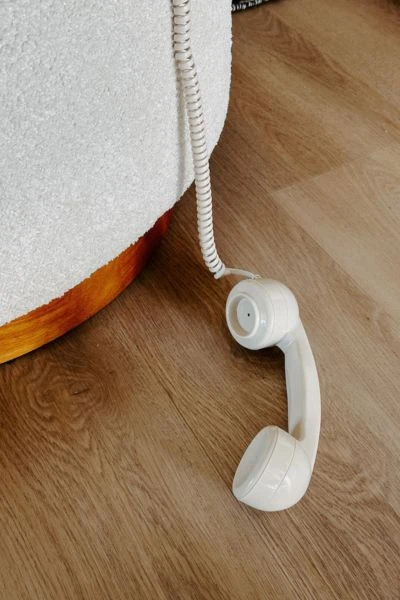





This is all such great information! I didn’t realize different social media can be so different when you post/pin/etc. Thanks for sharing!
All of these are fantastic tools to make money, Candice! I use many of them, but have always wanted to try BlogtoPin, I’m so intrigued by it, I always create my own pins in Canva but that would be so helpful if it did it for me!
Make Life Marvelous
That’s so true, BlogtoPin is a huge time-saver! It really speeds up the Pinterest process so you can focus on content creation.
Love all of these blog traffic tips for the holidays, Candice! It’s so hard to believe it’s almost holiday time and it’s always great to get ahead as much as possible with content.
Wishing you a wonderful rest of your week! 🙂
Make Life Marvelous
Great tips, Candice! It’s very eye-opening just how important building your email list is. Thanks for the helpful information!